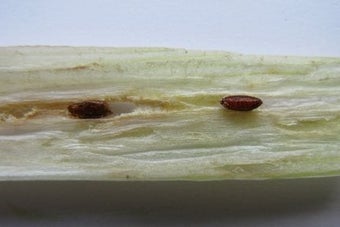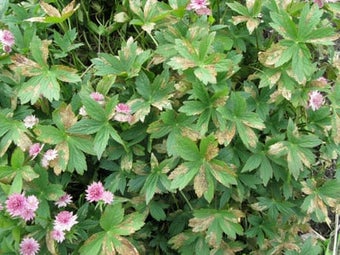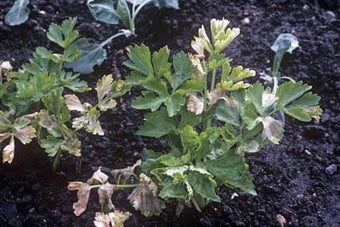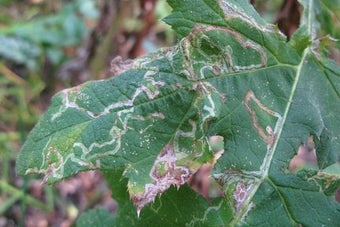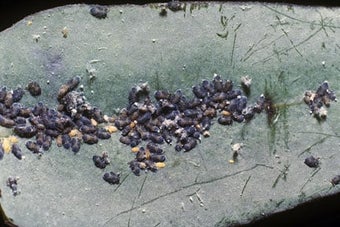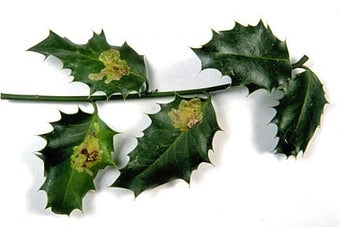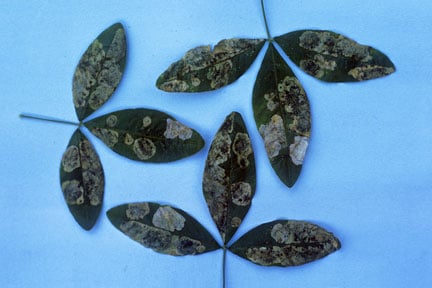
Quick facts
Common name - Laburnum leaf-mining moth
Scientific name - Leucoptera laburnella
Plants affected - Laburnum
Main symptoms - Grey or brown circular blotches in leaves
Caused by - Caterpillar of a moth
Timing - June to September
What is laburnum leaf mining moth?
The adult laburnum leaf mining moth has a wing span of 8-9 mm, the forewings are white with yellowish-brown and purple markings at the wing tips. The caterpillars feed within the leaves of host plants, are greyish white and up to 6 mm long when fully grown.
Nearly 900 insects, including some flies, beetles, moths and sawflies create leaf mines as larvae in Britain. More information about some of these insects can be found at .
Symptoms
The shape of the leaf mine caused by the caterpillars of laburnum leaf mining moth is a circular blotch which, when fully developed, can be seen on the upper leaf surface as a brown area about 10-15 mm in diameter. It is the only leaf mining moth likely to affect Laburnum in Britain.
There are usually two generations of the moth during the summer, with caterpillars feeding in late June-July and in September. In hot summers there may be a third generation. In some cases leaves can contain several mines which coalesce and so no longer show the typical shape of the mine. If a mined leaf is held up to the light, a spiral grooving can often be seen within the mine.
Management
Although leaf mining damage may be considered unsightly, it is unlikely to affect the health or vigour of an established tree or shrub and does not need to be controlled. Leaf miners can be part of a healthy balanced garden, most species will have natural enemies including parasitoid wasps. Birds such as blue tits can sometimes open mines to consume the larvae within.
